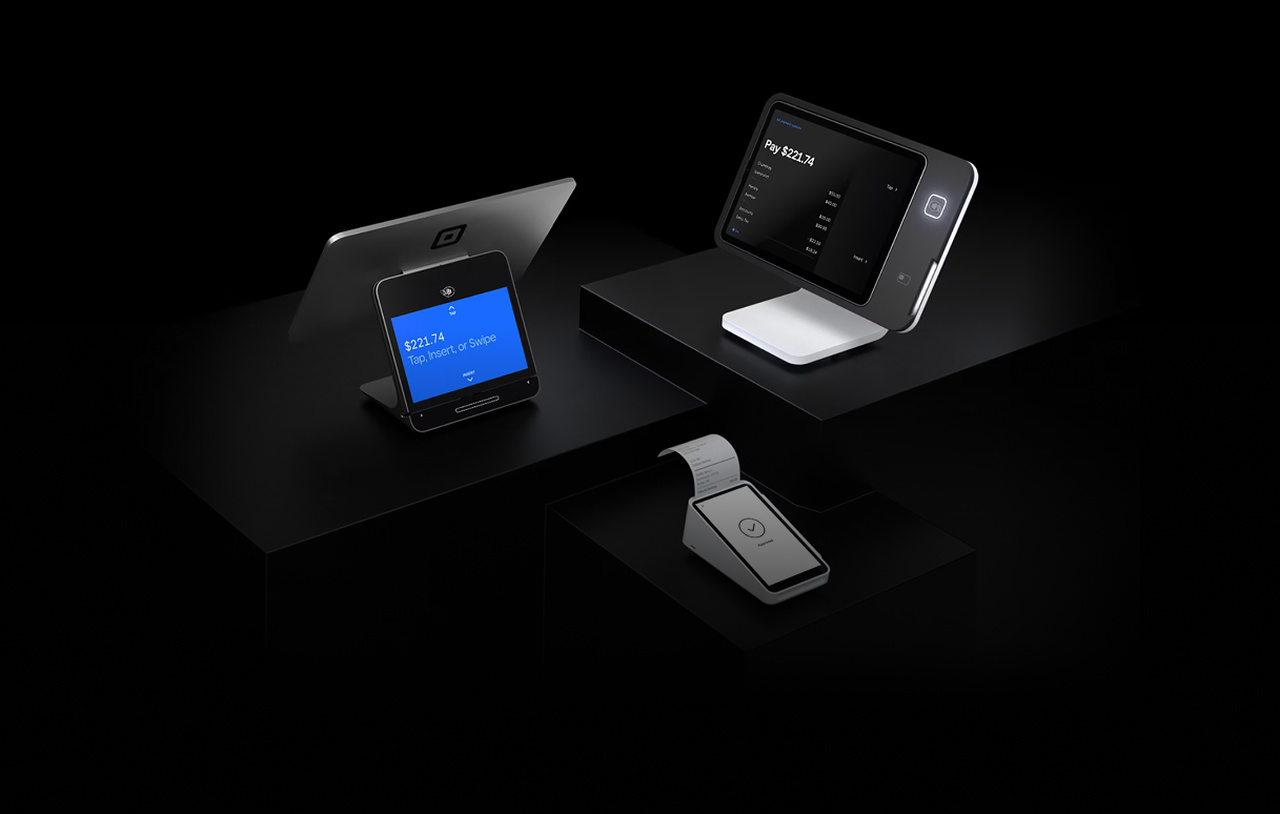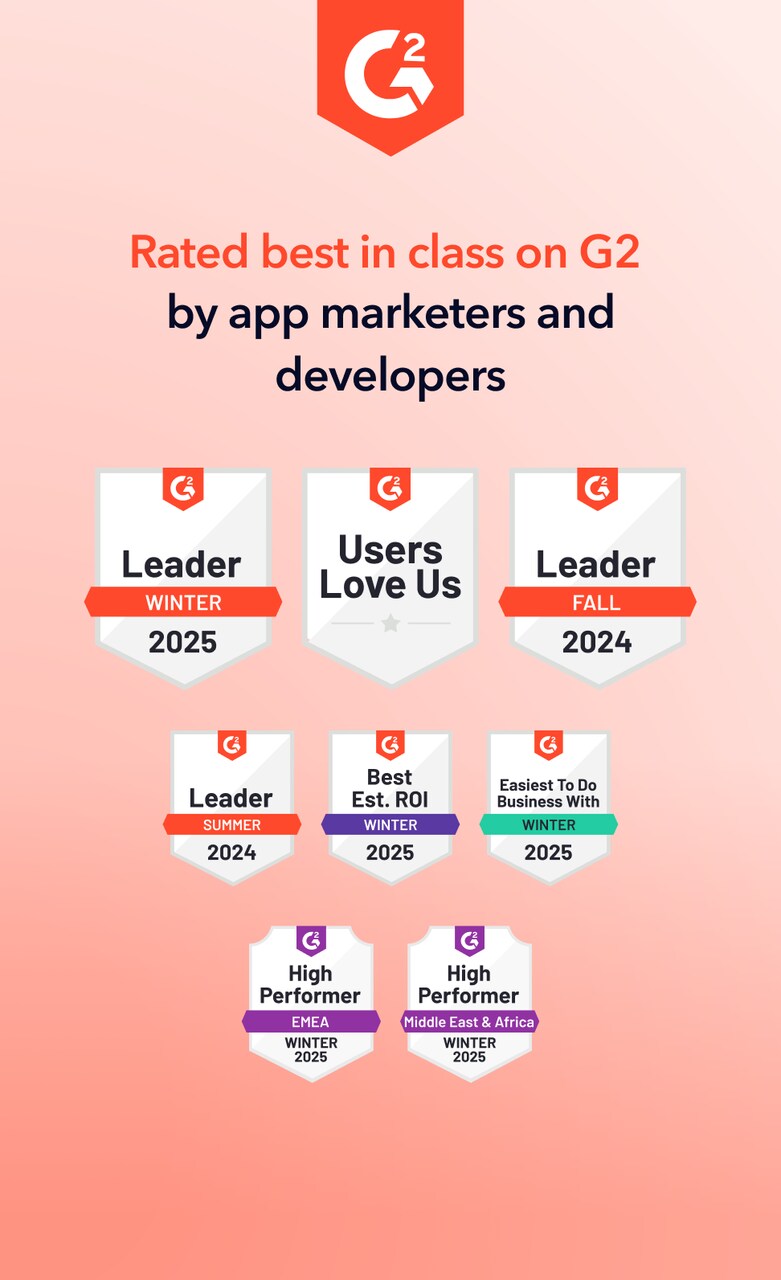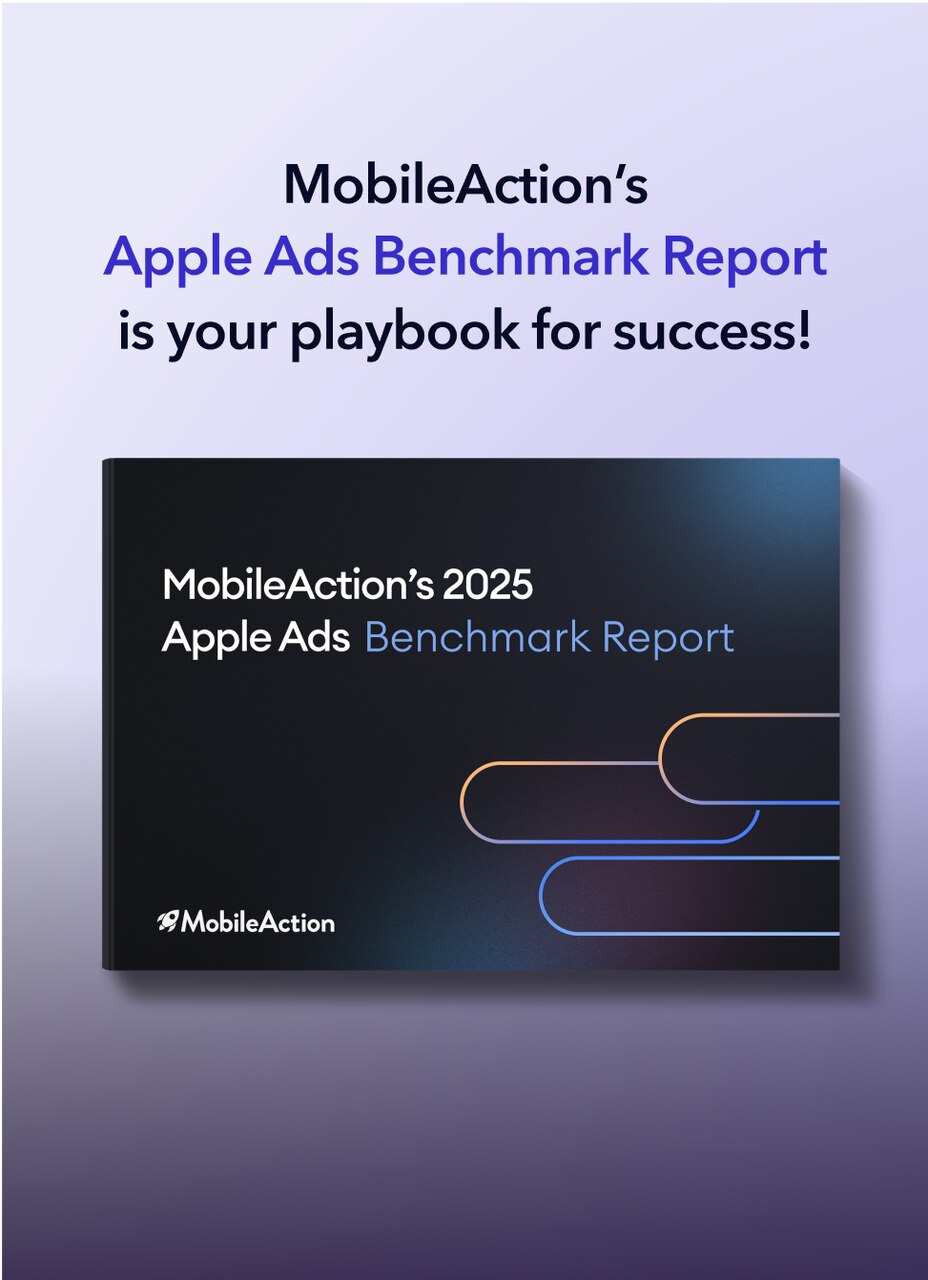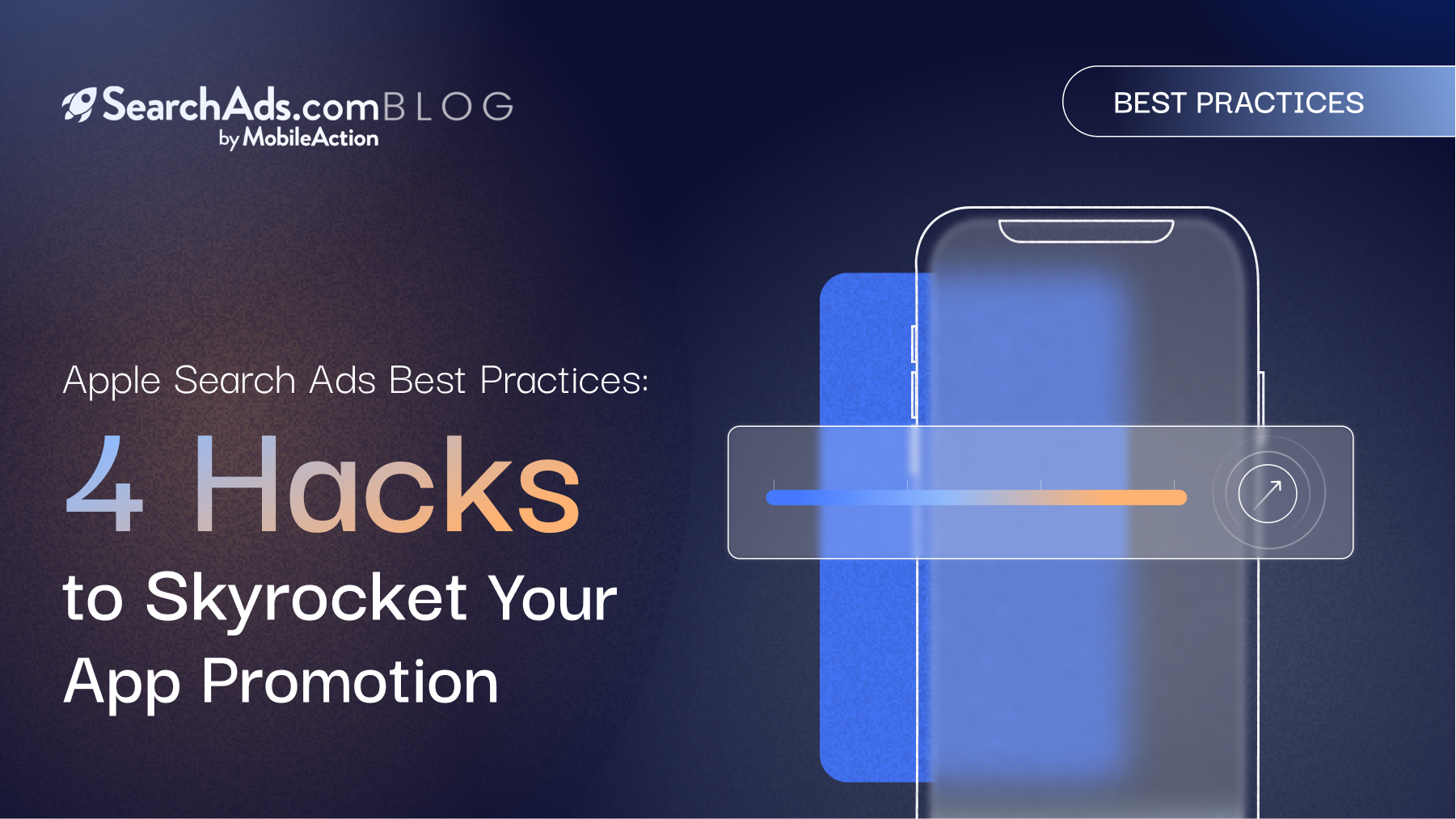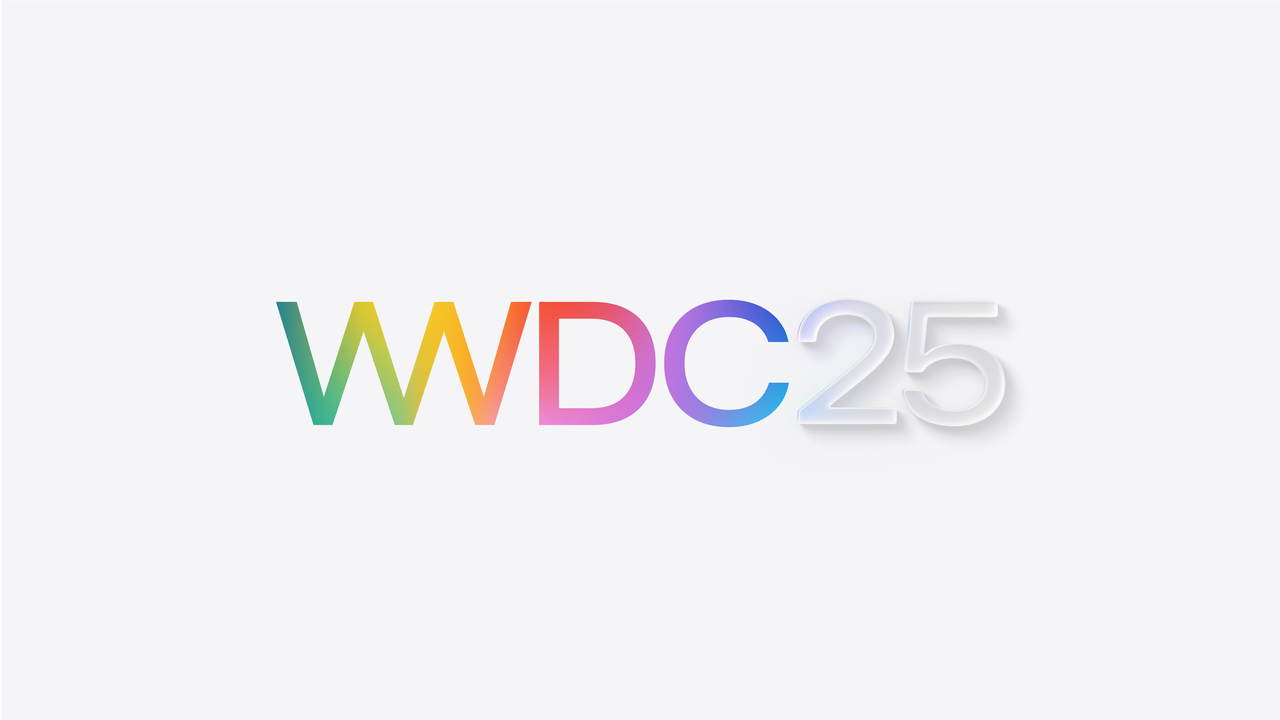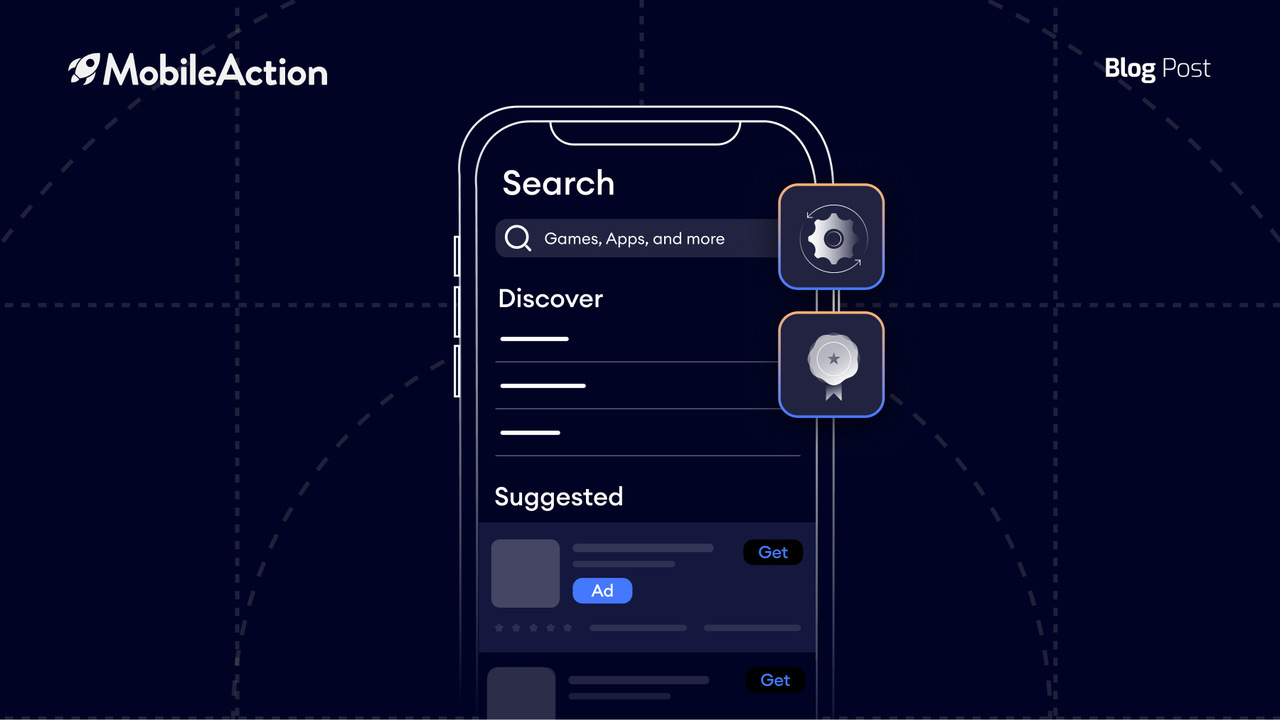To ensure the success and exposure of your mobile application in the cutthroat world of app advertising, you must always be one step ahead of the competition. On the App Store, where millions of apps compete for users’ attention, it’s crucial to apply Apple Search Ads best practices to your advertising campaigns. Doing so will increase your app’s discoverability and encourage profitable user engagement.
In this Apple Search Ads best practices guide, we have prepared four key tips that will significantly help you get the most out of Apple Search Ads. These tried-and-true techniques will boost your Apple Search Ads campaigns and open the door for more downloads and income.
This reading will provide you with in-depth knowledge about everything from building a robust keyword strategy and crafting a compelling campaign structure to optimizing your max CPT bids and driving relevancy and conversions through creative optimization.
Get ready to take your app promotion to new heights with these game-changing strategies.
Let’s get started!
1) Build a robust keyword strategy
Discovering effective keywords to apply Apple Search Ads best practices is a crucial initial step that requires careful consideration before launching your campaign. Many marketers make the mistake of not investing enough effort or conducting thorough research, resulting in wasted time and a budget with little to no significant outcomes.
To avoid these pitfalls, it is crucial to dedicate enough time and effort to conducting some comprehensive keyword research, ensuring a solid foundation for your Apple Search Ads campaign.
Before diving deeper into keyword research, it’s important to familiarize yourself with key terms that will prove beneficial throughout the process of running an Apple Search Ads campaign. These terms include exact match, broad match, Search Match, and negative keywords.
Exact match: With the exact match option, you have greater control over searches where your ads may be displayed. You can select a certain term and close variations, such as plural and commonly misspelled versions of these specific keywords. Because you are addressing clients who are most interested in what your app has to offer, your ad may receive fewer impressions. In return, your tap-through rates (TTRs) and conversions on those impressions may be higher. Employing exact match allows advertisers to reach high-intent users with precise keywords.
Broad match: This default match type in Apple Search Ads promotes your ad when a user searches for a keyword, its synonym, a misspelling, or a closely related variation. This match type is suitable when you want to save time on building keyword lists. In this way, broad match ensures that you don’t overlook relevant queries that your exact match keyword list may miss. Remember, broad match can reach a broader audience, so it’s important to monitor metrics closely, manage bids and budgets, and add negative keywords to maximize performance.
Search Match: As a feature of Apple Search Ads Advanced, Search Match utilizes various resources such as metadata from your App Store listing, information about similar apps in the same genre, and other search data to match your ad to relevant searches on the App Store. Enabling Search Match allows your ad to be automatically matched with search phrases, maximizing your keyword coverage. As Search Match covers a broad range of searches, it’s important to monitor its performance and manage your budgets accordingly.
Whichever combination of keyword types you use, negative keywords are essential to help refine your campaigns.
If you want to take your keyword strategy to the next level, you can also get a helping hand from SearchAds.com’s smart tool, Keyword Advisor.
The algorithm of Keyword Adsivor generates possible keyword lists, finds new keywords for Apple Search Ads campaigns, keeps track of your competitors’ keywords, and recognizes high-intent keywords in the system. As a result, it makes suggestions for relevant keywords based on your mobile app.
Given the wide variety of keywords available, having an automatic advisor will be quite helpful. Manually doing this will take hours, but by using Keyword Advisor by SearchAds.com, you can find them all quickly.
You can see the Keyword Advisor interface displayed. Here, you can see the keywords, their types, and their strengths.
Negative keywords: Negative keywords prevent your ad from appearing in specific search queries, reducing costs while enhancing campaign effectiveness. There are two kinds of negative keywords. Exact match negative keywords make sure that your advertisement does not appear for a specific word or phrase. On the other hand, broad match negative keywords should be used to make sure that an ad does not show up for the words or phrases you choose.
Therefore, an advertiser who wants to employ Apple Search Ads best practices should utilize negative keywords to prevent ads from showing against queries that are not relevant or that result in no conversions.
Keyword Advisor enables you to simply select a keyword and add it either to your paid keyword pool or negative keyword list.
2) Craft a compelling campaign structure
When starting an Apple Search Ads Search campaign, the first decision you need to make is whether to choose a Basic or Advanced campaign. To make an informed choice, it’s important to understand the differences between Apple Search Ads Basic and Apple Search Ads Advanced and how these two options work.
Apple Search Ads Basic: This option provides a relatively simpler and faster setup process for search results ads, which is the only ad placement type available with this option. Advertisers must manage at least one app with a monthly spending cap of $10,000 and can promote a maximum of 50 apps.
With Apple Search Ads Basic, the platform automatically matches ads to potential users based on the advertiser’s objectives, eliminating the need for specialized knowledge. Advertisers can easily assess their performance through the dashboard with minimal time commitment. The platform offers straightforward management and reporting features to track metrics.
Payments in Apple Search Ads Basic are based onCost Per Install (CPI), where advertisers pay for each app installation.
There is no long-term commitment, allowing advertisers to withdraw or modify their advertising budget freely.
Apple Search Ads Advanced: With this option, there are a variety of ad placements open to you, allowing you to reach user throughout their App Store journey. You can select whether to display advertisements while users are browsing on the Today tab ads, Search tab ads, product page ads, or search results ads, which is what we’ll focus on below.
With Apple Search Ads Advanced, advertisers have unlimited budgets and app limits, along with customization options during setup. They can choose specific target group characteristics such as age, gender, and geographical location. Using this option, they can aim to reach particular goals, such as increasing their app visibility, targeting specific audiences, and capturing the desired amount of demand. Although it requires more time and effort, Apple Search Ads Advanced provides more control over managing your Apple Search Ads campaign.
Advertisers can select keywords they want to target, create different ad groups, run multiple ad variations, and receive comprehensive reports to track key performance indicators (KPIs).
In Apple Search Ads Advanced, payments are based on Cost Per Tap (CPT), which is the most significant difference from Apple Search Ads Basic. Advertisers pay for each tap on their ad, regardless of whether an app installation occurs or not. Furthermore, with this option, you can have access to detailed reporting with a range of recommendations.
Understanding the distinctions between Apple Search Ads Basic and Apple Search Ads Advanced will help you make an informed decision based on your specific needs and campaign goals.
By placing bids on certain terms that their users are frequently searching for, advertisers have the opportunity to further boost their Apple Search Ads campaigns using the Apple Search Ads Advanced model.
Therefore, these draw the main differences between these models in a nutshell:
The next step in crafting a compelling campaign structure is to learn about different sorts of campaigns. These are Brand Campaigns, Category Campaigns, Competitor Campaigns, and Discovery Campaigns.
Brand Campaign: This type of campaign focuses on targeting keywords directly related to your app’s specific brand. It aims to capture users who are specifically searching for your brand or its variations.
Category Campaign: In a Category Campaign, the focus is on non-brand keywords that define the genre or category of your app and highlight its offerings. It aims to capture users searching for apps within a specific category.
Competitor Campaign: A Competitor Campaign targets keywords that are relevant to apps falling under the same or closely related categories as yours. The goal is to capture users who are searching for your competitors’ apps but may be open to exploring alternatives.
Discovery Campaign: A Discovery Campaign combines broad match and Search Match to automatically match your ad to relevant search terms. It aims to reach a broader audience and uncover frequently searched terms you can then include as exact match keywords in your brand category and competitor campaigns.
The recommended combinations of matching and campaign types are as follows:
According to Apple Search Ads best practices, here are some recommendations for determining the correct campaign type and match type composition:
- Organize your account by keyword themes to effectively measure outcomes, improve performance, and reach relevant users for your app.
- Create four distinct search campaigns, each focusing on a different theme or strategy: brand, category, competitor, and discovery.
- For the brand, category, and competitor ad groups, set all keywords to exact match and ensure Search Match is disabled. This ensures precise targeting for these campaigns.
- In the broad match and Search Match ad groups of your discovery campaign, include all the keywords from your brand, category, and competitor campaigns as negative keywords. This prevents overlap and ensures that the discovery campaign targets new and relevant search terms.
- Adjust your bids at the keyword level based on the performance of each specific term. Specify exact match bids to optimize your campaign’s effectiveness.
- Include all the keywords from your brand, category, and competitor campaigns in the broad match ad group of your discovery campaign. Set the match type to broad match and disable Search Match for this ad group.
- Identify the top-performing search terms from the broad match and Search Match ad groups in your discovery campaign. Add those terms as keywords to your other campaigns. Remember to add them as exact match negative keywords in your discovery campaign to avoid duplication.
By following these guidelines, you can create a well-structured and optimized Apple Search Ads campaign that targets the right audience, maximizes performance, and utilizes the strengths of each campaign type and match type.
If you are new to Apple Search Ads and find all this information complicated, SearchAds.com can help you with its Quick Campaign Setup product.
Quick Campaign Setup is a smart tool that helps you build Apple Search Ads Campaigns in 3 clicks!
It analyzes the best-performing competitor keywords and lets you add or remove keywords with a single click. All you have to do is say your app, brand keyword, and storefront you want to target, and set your Daily Budget and maximum CPT.
In this way, you can earn while you learn about Apple Search Ads, build faster campaigns for different storefronts to expand your reach, and skip lengthy research to work efficiently with proven results.
This is the Quick Campaign Setup interface where you can that build your Apple Search Ads Campaigns in 3 clicks.
3) Optimize your max CPT bid frequently
To optimize your maximum Cost per Tap bid, there are some Apple Search Ads metrics and KPIs that can be used in this regard. Advertisers wishing to follow Apple Search Ads best practices and promote their own app should make sure they have a good understanding of what these metrics and KPIs mean and how they should be interpreted.
The Apple Search Ads metrics and some informative KPIs to look at are:
- Impressions
- Taps
- Tap-Through Rate (TTR)
- Install
- Conversion Rates (CR)
- Cost per Tap (CPT)
- Spend
- Return On Ad Spend (Apple Search Ads and MMP integration are required)
- In-app Conversion (Apple Search Ads and MMP integration are required)
To learn more about mobile marketing and some informative KPIs, you can check the courses offered by MobileAction Growth University!
All these will provide you with some knowledge about how to optimize your bidding and when to increase or decrease this specific amount.
All of this information provides valuable insights on how to optimize your maximum Cost per Tap (CPT) bid and when to adjust the bid amount accordingly.
Scenarios to consider increasing your bid:
Leverage Search Match: As we now understand that Search Match matches your ad to relevant terms that drive conversions for your app, it may be worth increasing your max CPT bid to potentially increase impressions and reach a wider audience.
Bid range below expectations: If the suggested bid range significantly exceeds your current max CPT bid and the performance is below your expectations, increasing your max CPT bid might be worth considering to enhance results.
Compete for popular keywords: If you’re not getting enough impressions for a popular keyword directly related to your app, it’s possible that other advertisers are outbidding you. To increase visibility and potentially improve conversions, consider increasing your maximum CPT bid for those specific keywords.
Scenarios to consider decreasing your bid:
High TTR with low CVR above target CPA: If you observe a high tap-through rate (TTR) but a low conversion rate (CVR) that exceeds your target CPA, reducing your bid could be a prudent move to maintain a lower CPA while potentially reducing impressions.
Low conversions with a high CPA for a specific term: If a particular term generates taps but yields minimal conversions with a CPA higher than your target, reducing the bid can help maintain a lower CPA. This approach may result in fewer impressions, but you can still secure some impressions for that particular keyword.
Get assistance: Apple Search Ads’ range of recommendations is designed to help you improve the performance of your search results campaigns. You can easily apply recommendations for keywords, bids, and daily budgets. With keyword-related recommendations, you may see search keywords that users are using to find apps like yours on the App Store. In bid recommendations, you are recommended for high-opportunity keywords. Finally, with daily budget recommendations, you get suggestions to enhance the likelihood that users will download apps.
By carefully analyzing these scenarios and adjusting your max CPT bid accordingly, you can optimize your Apple Search Ads campaigns for better performance, increased impressions, and improved conversions.
Furthermore, you can get a helping hand from SearchAds.com’s Smart Bidding product. This tool helps you automate your bid management in your Apple Search Ads. Your bids are continuously improved using AI-based optimization based on current performance information.
If you also want to automate your bid management to save you time and allocate more time to the rest of your campaign, you should give the Smart Bidding tool a try! By enhancing your targeting capabilities, Smart Bidding improves the performance of your entire campaign.
The algorithm automatically responds to the actions of your target consumers since it continuously optimizes your bids in accordance with the bidding goal you define. Smart bidding sets the offers based on your daily budget and optimizes your bids for you to reach your campaign goals.
Here is the Smart Bidding page, where our algorithm provides you with options for achieving your campaign goals.
4) Drive relevancy and conversions through creative optimization
Understand how the creatives work: You can drive relevancy and conversions through creative optimization with the help of custom product pages. With custom product pages, you can create numerous ad variations of your App Store product page to highlight various features or content found in your app. Moreover, you can distribute them to various audiences using distinctive URLs. These pages can also be used to display content that is seasonal or culturally appropriate.
Screenshots, promotional copy, and app previews that differ from those on your regular product page can be included in ad variations. Furthermore, creating ad variations through custom product pages can help make your search results ads more relevant to potential customers.
Ad variations can be extremely beneficial in driving relevancy. For instance, they can be helpful in tuning to specific audience types, tapping into seasonal events, and emphasizing the new features or functionalities of an app. By doing that, users can relate themselves to the specific benefits that your app serves and be captured by utilizing the hype around seasonal events. Therefore, they play a crucial role in driving conversions and creativity.
Prioritize relevance: Relevance is key when it comes to both Apple Search Ads and ASO. Ensure your chosen keywords are highly relevant to your app, as Apple values relevance in search results. Focus on attracting users who are genuinely interested in your app, rather than just driving clicks. Relevance should be the guiding principle in selecting keywords.
Optimize your metadata: Your app’s metadata, including the title and subtitle, plays a crucial role in ASO. Constantly test and update your metadata to improve visibility. Conduct A/B testing to find the most compelling and relevant title and subtitle combinations that attract users’ attention and accurately describe your app’s features.
Stay up-to-date: Apple appreciates frequently updated apps. Regularly updating your app not only increases your chances of being noticed by Apple but also boosts your organic App Store ranking. Therefore, to employ App Store best practices, you should pay attention to user reviews and ratings, as positive feedback can enhance your app’s visibility and help you reach your target audience. Address any negative feedback by promptly updating your app and striving to improve user satisfaction.
Go by the book: Following Apple’s guidelines is essential to ensuring your app is accepted and remains on the App Store. According to App Store best practices, non-compliance can lead to app rejection or removal, wasting valuable time, effort, and resources. Adhering to the guidelines also keeps your app current and competitive.
By integrating these Apple Search Ads best practices and ASO techniques, you can maximize the visibility, relevance, and appeal of your app, attracting more engaged users and driving better overall performance.
5) An extra hack: Take one step further
There are many ways for an advertiser to promote their app. With Apple Search Ads, you can promote your apps at the top of search results on the App Store. However, with the world changing each and every day, it is becoming harder to follow up with users’ preferences. As a partner of Apple Search Ads, SearchAds.com offers a way to run more efficient campaigns.
Moreover, SearchAds.com is an Apple Search Ads campaign management and optimization platform where advertisers can integrate their Mobile Measurement Partner (MMP), set goals to take bulk actions, and create automation rules. The platform will help developers, advertisers, and agencies employ Apple Search Ads best practices and optimize the performance of their campaigns.
How do we establish all of these?
Schedule a demo, pick a time, and meet with our Apple Search Ads experts!


